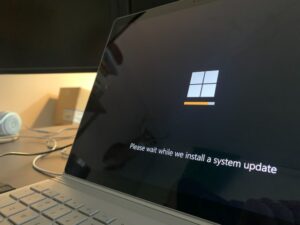Computer software examples and types
by Mike

The software industry is a huge market, with new programs being developed every day. It’s hard to keep track of all the different kinds of software out there, so here are some basic definitions:
Application Software
Application software is what most people think of when they hear the term “software.” This includes programs like Microsoft Word and Adobe Photoshop that run on personal computers (PCs). Application software can be used for any number of purposes, from business to entertainment.
System Software

System software is required for your computer to operate correctly. While not as user-friendly as application software, system software does tend to be more stable and reliable. Examples include operating systems like Windows or Mac OS X; device drivers that allow your computer to communicate with external devices; and file compression/decompression programs like WinZip or StuffIt Deluxe.
Firmware
Firmware refers to small pieces of program code that are stored in special memory chips on your PC’s motherboard or in other hardware components (such as hard drives and video cards). Some firmware updates may be necessary if you want to use certain features on your PC (for example, if upgrading from Windows XP to Windows Vista requires new hardware drivers).
Programming Software
Computer programming software is a type of computer software that allows computer programmers to write, test, debug, and maintain the source code of computer programs. There are many programming languages to choose from, each with its own benefits and drawbacks.
Driver Software

The driver software is a form of middleware designed to operate or control a device or group of devices. Most drivers support a standard interface to the hardware device, enabling operating systems and other software applications to access these devices using standardized command sets. A driver providing a standardized interface is known as a device driver for the operating system or application software.
Freeware
Freeware refers to any software that is made available free of charge by its developers who do not wish to make any profit from it. Freeware can be either open source or proprietary, depending on whether you can use it without paying for it (open source) or not (proprietary).
Shareware
Shareware is a class of proprietary software that can be used at no cost for an indefinite period but which may have some feature(s) disabled unless registered with the author(s). The term shareware was coined by analogy with free beer; like free beer, shareware might be worth nothing.
Open Source Software (OSS)

Open Source is computer software for which the source code is made available for modification or enhancement by anyone. It is a general method of development that promotes rapid prototyping, accessibility to the end user and collaborative software development. The open source process relies on the power of many individuals to overcome any single individual’s shortcomings, such as lack of time, lack of experience, and lack of motivation.
Closed Source Software (CSS)
Closed Source, unlike Open Source, is computer software where the source code is not available for viewing or modification with no option for accessing it at all. This may be due to copyright restrictions or simply because the developers want to keep their work secret.
The software industry is a huge market, with new programs being developed every day. It’s hard to keep track of all the different kinds of software out there, so here are some basic definitions: Application Software Application software is what most people think of when they hear the term “software.”…

